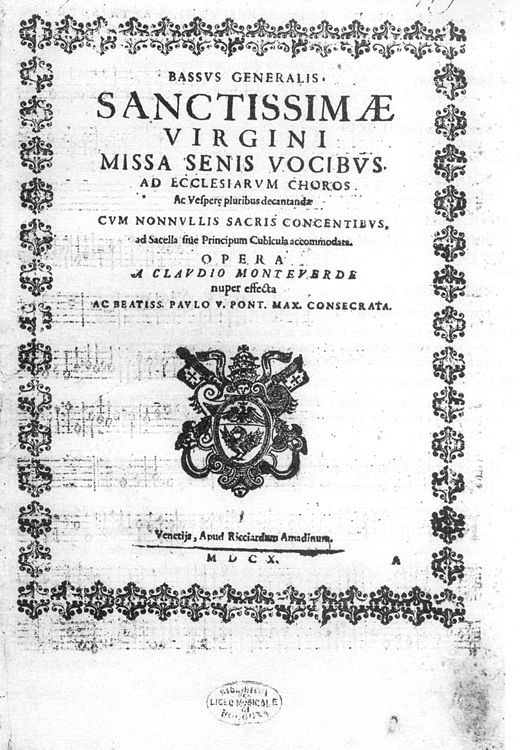In 1610 Monteverdi published one of his finest works, the Vespers, comprising a Mass, 2 Magnificats, 11 “motets,” and an orchestral sonata. In it he combines solos, ensembles, choral writing for one and two choirs of up to five voices each, orchestral ritornelli (some in six real parts), in addition to a sonata, and obbligati for various instruments. The style ranges from the old to the new, from richly imitative seven-part polyphony to highly affective monody, from rhythmically clear-cut, ear-catching melodies to complex highly virtuosic melismas. As Denis Arnold (1963) said, “Passion and magnificence—these two are inseparable words when describing this volume.”
The Vespers may have resulted from Monteverdi’s desire to write a large-scale, widely expressive sacred work that complemented, to some extent, his operatic output. It almost certainly was a result of his wish to find another post, a wish that arose from the growing dissatisfaction with conditions, particularly his salary, at the Mantuan court. His situation became aggravated in 1612, when Vincenzo I died, for shortly afterward he was dismissed by Vincenzo’s successor, Ferdinand. For over a year Monteverdi sought employment that was commensurate with his now considerable reputation, and finally, in August 1613, he was appointed to one of the most prestigious musical positions in Italy, that of maestro di cappella at the famous basilica of St. Mark’s in Venice.

